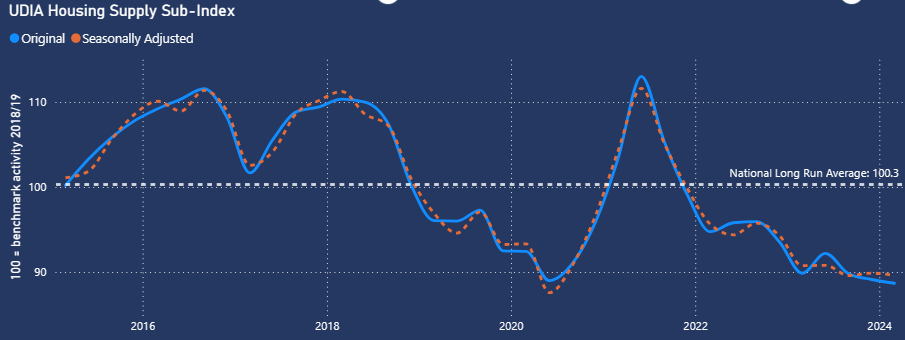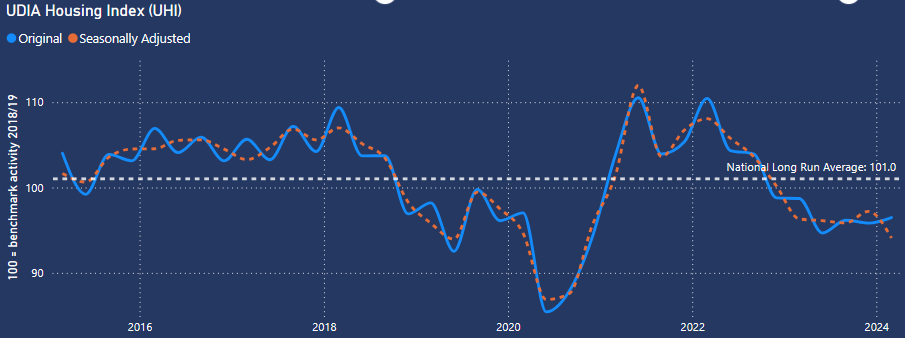The Urban Development Institute of Australia (UDIA) has launched a new benchmarking tool that provides a quarterly assessment of the residential development and construction market.
The index’s baseline measurement is 100 points, reflecting the average performance achieved across the four quarters of the 2019 financial year.
The UDIA shows that demand was running well above average amid record population growth (net overseas migration) in the March quarter:

Meanwhile, supply was running well below average amid the collapse in construction rates:

Supply was being dragged down by soaring construction costs:

Accordingly, the UDIA Housing Index tanked to well below average levels in the March quarter, reflecting housing demand running well ahead of supply:

The UDIA summarised the results by noting that “the national housing market continues to be severely impacted by very high costs and elevated demand, with supply levels remaining at historical lows”.
“The high-cost environment (for developers and consumers) allied with the strong rebound in demand (underpinned by the highest rates of population growth recorded in two decades) versus a very weak national dwelling supply profile (with dwelling approvals and dwelling commencements at decade lows)”.
The AFR’s Larry Schlesinger added that “based on its forecasts, the industry will need to double its capacity and build an “eye-watering” 300,000 homes between 2026 and 2029 to meet the 1.2 million target”.
Australia’s record for dwelling completions was 223,600 in the year to March 2017.
However, the nation is currently running way below that level, with only 172,700 dwellings completed in 2023 and only 163,000 homes approved for construction in the year to March 2024:

Given these inconvenient facts, the only genuine and realistic solution to Australia’s housing shortage is to cut demand by slashing net overseas migration.
Put simply, Australia’s population must grow at a rate that is slower than the nation’s capacity to build homes and infrastructure.
Otherwise, Australia’s housing crisis will become a permanent feature of the economy.

